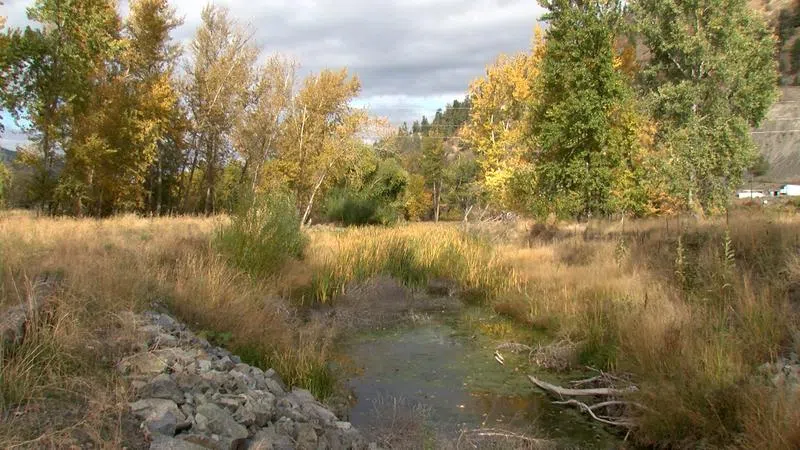Indigenous-led STUWI(x) Naturalization Project begins restoration work in flood-damaged area of Merritt

Image Credit: Kent Simmonds / CFJC Today
Community tour groups were given a walk-through this week of what will eventually be a restored nature area at the end of Pine Street in Merritt.
The STUWI(x) Naturalization Project is a new floodplain restoration plan led by local community members and the six area First Nations, with funding and resources pitched in from the provincial and federal governments.
Work is getting underway near the junction of the Nicola and Coldwater Rivers to prevent widespread flooding in that area and see it returned to a more natural state.
“What does it look like in 18 months? I’d be happy to walk along (here). I’m not going to give up. I’ve been talking about the sacredness of water all of my life and I’m not going to stop,” says Doreen Sterling, one of the STUWI(x) Steering Committee members from the Lower Nicola.
The area was underwater for a number of years, but it’s been dry since the river’s path was altered during the atmospheric river event in 2021.
“This is one of the main areas that was flooded the worst,” Merritt Mayor Mike Goetz explained from the restoration site, “This is the Pine Street area that received the most damage and has changed direction. As a matter of fact, we’re standing where water used to flow. It no longer flows here. And this is where we are now working with the area First Nations to return this (land) as a reclamation project.”
It is part of the overall flood mitigation and restoration work to be done in the valley, but this specific project has a focus on Indigenous-led restoration.
This is not led by mayor and council. Mayor and council have almost nothing to do with this. We just facilitate,” notes Goetz. “There is a steering committee of all of the six bands in the Nicola Valley, plus there is representation from the City of Merritt. It cannot be a council member or the mayor. They meet and go through what this will look like.”
Part of the restoration work includes buying out some of the private properties in the area that lie within the floodplain.
“For this entire project corridor, it’s a $5.7-million funding envelope,” says Sean Strang, Merritt’s flood recovery and mitigation director. “That involves buying out private properties, that involves running the steering committee, removal of all of the structures, sheds, utilities, power poles, et cetera, and then the actual naturalization project at the end of it as well.”
Phase one is underway with completion estimated in 2027. The end goal is to enhance water quality and the wildlife habitat, and support the river’s natural flow to reduce flood hazards.
“We really struck a balance between projects like this that allow some room for the river and infrastructure projects to protect the rest of the houses,” notes Strang.
The steering committee feels the project also strikes a balance between Western science and engineering practices, and local Indigenous knowledge.
“We don’t want to go out and spend a bunch of money for some engineer from Vancouver to come down here and tell us how to naturalize this site,” adds Strang, who says the support from both the federal government and the provincial Ministry of Emergency Management and Climate Readiness has been paramount in getting the project off the ground. “We want to do it as a valley.”
“I hope to hear and see that the water is allowed to be the water, and that it is doing what it needs to do,” Sterling says when asked what she hopes to see take shape at the site in the next few years.



Comments